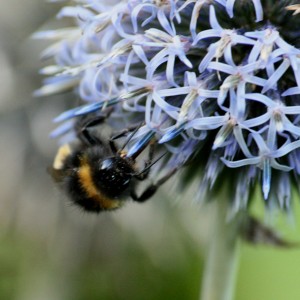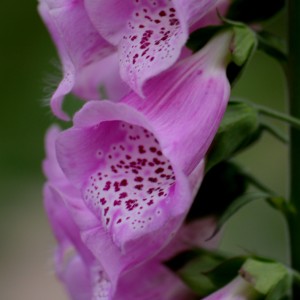Wildlife & Gardens
 The Monkey Sanctuary is home to much more than just monkeys; you can find out more about all the Cornish bugs and beasties in our wildlife gardens.
The Monkey Sanctuary is home to much more than just monkeys; you can find out more about all the Cornish bugs and beasties in our wildlife gardens.
The wildlife gardens allow our visitors to find out more about the vast array of plants, insects, birds, mammals and amphibians that make their home within the nine acre site. Explore bumble bee corner, guess the footprints and see if you can spot any of the beautiful local birds.
Our gardens are designed to be attractive to both visitors and wildlife. Sheltered and surrounded by Beech and Sycamore woodland, the gardens are situated on a south-facing slope, overlooking Looe Bay, which over the years has been divided into different areas to attract various species of plants and animals.
The Sanctuary is committed to managing all the grounds for wildlife. There are about 285 wildflower species, 23 butterfly species, 54 moth species, 15 mammal species, 6 amphibian and reptile species and at least 60 bird species. This represents a rich wealth of sometimes hidden wildlife.
 The edges of the woodland are a haven for birds and insects because of the densely-packed native shrubs, small trees and weeds. The pond is a home for frogs, toads and newts and is visited by dazzling dragonflies in summer and provides an important feeding and breeding station for wildlife. Our beautiful Spring and Summer meadows are sloping grassy areas planted with many local wildflower species. They are mown at specific times of the year to encourage a large variety of flowers to seed and blossom.
The edges of the woodland are a haven for birds and insects because of the densely-packed native shrubs, small trees and weeds. The pond is a home for frogs, toads and newts and is visited by dazzling dragonflies in summer and provides an important feeding and breeding station for wildlife. Our beautiful Spring and Summer meadows are sloping grassy areas planted with many local wildflower species. They are mown at specific times of the year to encourage a large variety of flowers to seed and blossom.
The original garden was created when the house was built, a time when the fashion was to plant exotic foreign species, such as azalea and rhododendron, as a symbol of the achievement of Britain and its far-flung empire! Today, we grow a few of the plants which were commonly grown when the Murrays still lived here, thus preserving a Victorian aspect to our garden.
Environmental, Conservation and Community Renewable Energy Grants provided by the Naturesave Trust
